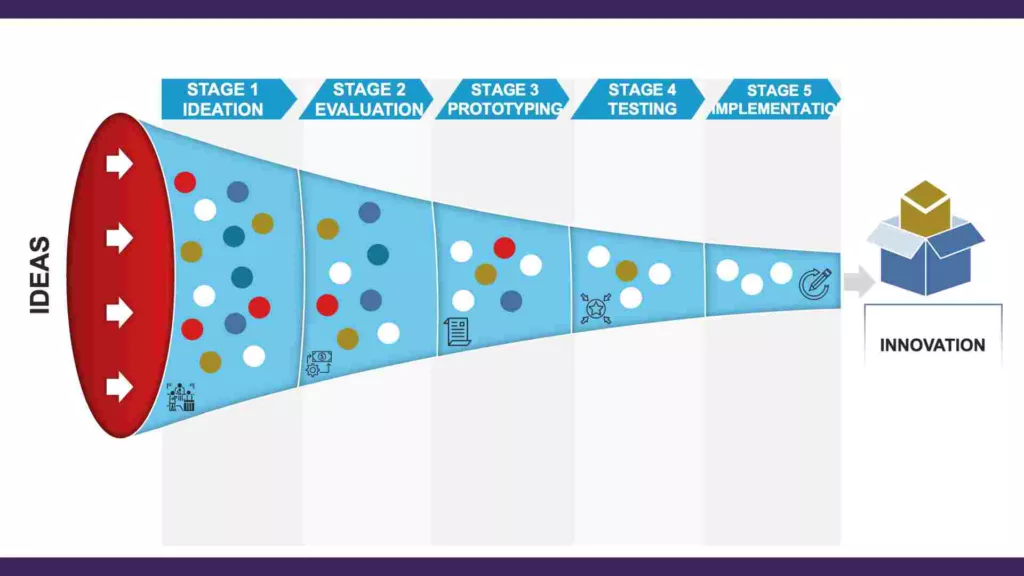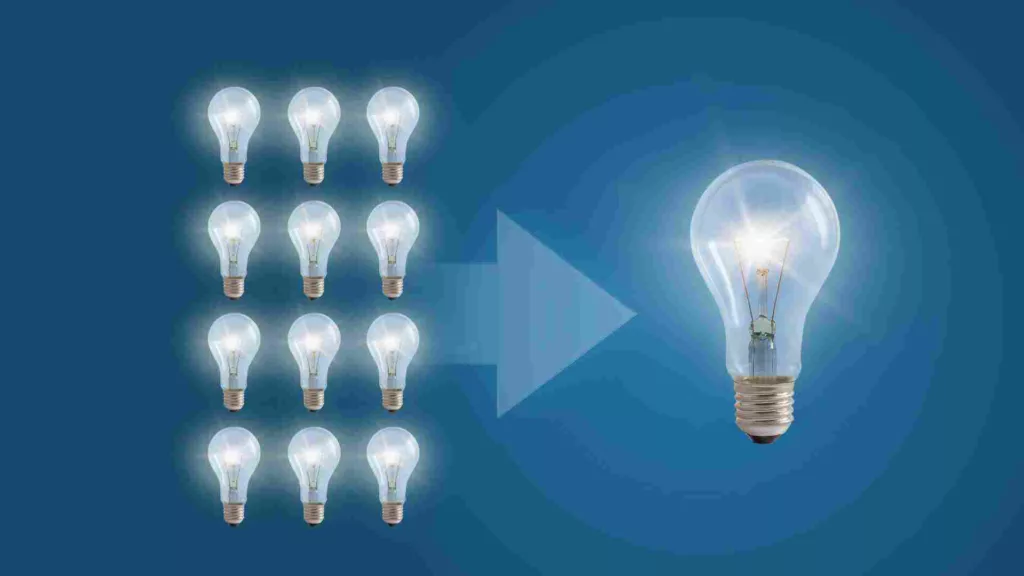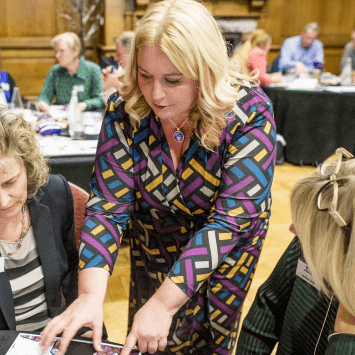Posted in Blog, Entrepreneurship, Innovation by Jo North
What is an Innovation Funnel?
An innovation funnel is a crucial tool for businesses. It takes a systematic approach to transform a vast array of ideas into actionable strategies. The ultimate aim? To pinpoint the most promising proposals that can drive growth and development.
Innovation Funnel Explained
At its core, the innovation funnel is a mechanism that helps businesses to navigate through new ideas. It helps to streamline business innovation and reduce risk, providing a process to prioritize, screen, select, eliminate, refine and test proposed innovative solutions.
Not all ideas make it through the funnel. The elimination effect is an important part of the funnel’s purpose. Exiting an idea as soon as it becomes clear that it’s not viable is useful. It saves time and money, and frees resource up to focus on more promising innovations.
On the other hand, once an idea has been through all the stages in the innovation funnel, it should finally emerge as a tangible, viable product or service. The idea will have been developed and tested with the right amount of structure and governance, without being slowed down by unwieldy processes.
How is the Innovation Funnel Visualized?
An ideal representation of the innovation funnel showcases how ideas move from the brainstorming phase, undergo various filters, and arrive at the final implementation.
In practice, progress on the idea is usually not a linear as the diagram suggests. Insights gained from different stages often mean that the idea development needs to go back a stage or two, in an iterative process.

Why Your Business Should Build and Use an Innovation Funnel
The business landscape is constantly shifting. To ensure a competitive edge, businesses need to stay relevant and up-to-date with changing customer needs.
By using the innovation funnel well, your business can discern unmet customer needs – innovation opportunities – align them with groundbreaking ideas, prioritize them and then invest in developing the most promising ones. When the leadership team is on board with it, this synchronization helps with the effective creation of successful, sustainable, future-forward business models.
Diving Deeper: Stages of the Innovation Funnel
Here’s a guide to the five key stages of the innovation funnel.
At each stage of the innovation funnel, the business makes a decision on whether or not to progress the innovation to the next stage. These decision points are often referred to as ‘stage gates‘, or ‘decision gates’.
Ideally, some ideas will drop out at each stage, leaving only the very best ideas at the end.
Stage 1: Ideation. The Birthplace of Ideas
Every innovative concept starts with an idea. The ideation phase, often supported by design thinking sessions or open innovation platforms, is where numerous new concepts emerge. Here, teams don’t just have a lot of ideas; they generate a constant stream of them.
Stage 2: Evaluation. Sifting Through the Potential
With the influx of so many ideas, it’s important to assess them critically. The evaluation stage is where any available data comes into play. Alongside specific set criteria, each idea’s potential impact and feasibility are assessed. It’s not always about the best ideas or great ideas, but the most actionable ones.
You will need to set the evaluation criteria for your business, in line with your mission, vision and goals, because each company is different. Decide how you will measure the success of your innovations, then work back from there to structure your evaluation framework.
Stage 3: Prototyping. Bringing Thoughts to Life
It’s one thing to have a brilliant idea and another to see it in action. This is where the prototyping stage of the innovation funnel comes in. Ideas that have been deemed promising are molded into tangible prototypes or trial service propositions. The prototype might represent a new service or product with the potential to transform an entire industry!
Stage 4: Testing. The Crucible
The only way to know if an idea is truly viable is to test it. Before going all in, these ideas are subject to rigorous testing. Feedback mechanisms, like focus groups and early-stage initiatives, become invaluable. They refine the concept, making it ready for a full-scale launch.
Stage 5: Implementation. The Final Frontier
With the prototype tested and refined, the idea finally sees the light of day. It moves from being just another proposal in the innovation portfolio to a fully-fledged product or service offering.
Pros and Cons of the Innovation Funnel
The Upside
The innovation funnel isn’t just a favorite tool for top-level executives; it’s a necessity. By offering a structured way to manage innovation efforts, it ensures that investment in new ideas and developments are always in line with the company’s strategic objectives.
Because the innovation funnel is an approach used across the company, it can drive collaboration amongst diverse teams, creating greater potential for truly innovative ideas.
The Downside
Like all approaches and processes, the innovation funnel has its pitfalls. The process can feel time-consuming. That should improve over time.
Plus, there’s always the risk that some potentially game-changing ideas might get sidelined if they don’t match the company’s current projects or overall business strategy.
The Way Forward: Navigating the Innovation Funnel
With a foundation in place, the next step is managing the funnel. Regular reviews are essential. They ensure that the funnel aligns with the broader business objectives as they develop over time.
It’s essential to tap into a diverse talent pool, from internal resources and external sources. This keeps the ideas fresh, relevant, and in sync with evolving market dynamics.
If you want to grow your business, the innovation funnel isn’t just a tool; it’s the roadmap. It paves the way for the using new technologies, meeting unique market demands, and helps you to shape an innovation strategy that increases your potential for sustained growth and success.
Innovation Funnel Case Study
The Triumph of Procter & Gamble (P&G)
Procter & Gamble (P&G), a multinational consumer goods giant, faced challenges in the early 2000s. Despite the company’s long-standing reputation for innovation, it needed to update its product pipeline and rethink its innovation processes.
P&G’s leadership realized the value of looking outside their internal resources for innovation. This strategy, known as open innovation, relied heavily on the principles of the innovation funnel.
Ideation
P&G began soliciting ideas not just internally and from external sources. These sources included independent inventors, research institutions, and even competitors. This ensured a constant stream of new ideas and potential solutions from diverse sources.
Evaluation
P&G used specific criteria and available data points to vet these ideas, identifying unmet customer needs and matching them with potential innovations. This process of filters ensured only the best and most feasible ideas advanced.
Prototyping
P&G developed ideas that showed potential into prototypes. For instance, P&G successfully collaborated with an external inventor to create a new version of their best-selling mascara.
Testing
P&G tested their new products extensively using traditional methods and new, innovative techniques. They sourced feedback in various ways, including focus groups and market trials.
Implementation
P&G scaled the products they had tested, including them into their broader product portfolio. A famous success from this approach is the Olay Regenerist line, which originated from an external collaboration and went on to become a best-seller for the brand.
By using the innovation funnel with their open innovation strategy, P&G relaunched its product lineup. Their strategy led to substantial growth and several blockbuster products.
The story of P&G underscores the value of the innovation funnel. By systematically filtering and refining ideas, you can identify those with the greatest potential for your business, leading to sustainable growth.
Build an Innovation Process for Your Business
If you’re interested in developing an innovation funnel for your business, do take a look at my more detailed articles here on how to strengthen your company’s innovation processes, nurture an innovative culture and thriving innovation ecosystem.
If you’d like any help with your innovation strategy, or have any questions, please do get in touch here. I’d love to hear from you.


